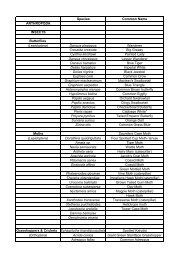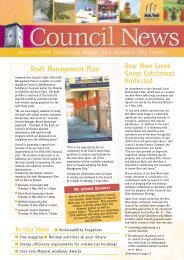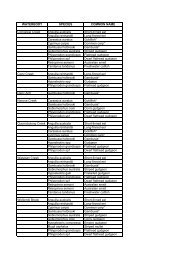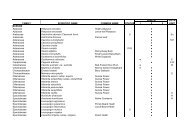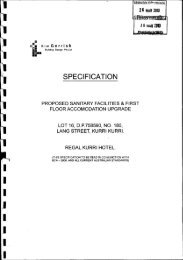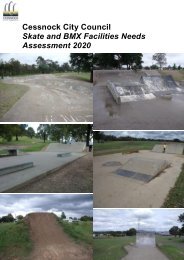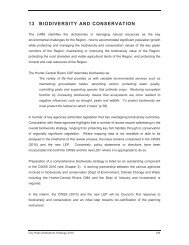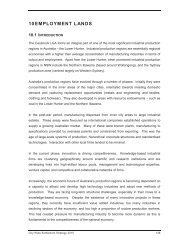E.8: BOW WOW CREEK GORGE - Cessnock City Council
E.8: BOW WOW CREEK GORGE - Cessnock City Council
E.8: BOW WOW CREEK GORGE - Cessnock City Council
Create successful ePaper yourself
Turn your PDF publications into a flip-book with our unique Google optimized e-Paper software.
Part E – Specific Areas<br />
Chapter 8: Bow Wow Creek Gorge<br />
8.2.6 Aboriginal Heritage<br />
An Aboriginal site is any place which has the remains of prehistoric and historic occupation, or is<br />
of contemporary significance to the Aboriginal community. The lack of detailed field study work<br />
and investigations of Aboriginal occupation in the Bow Wow Creek Gorge Catchment makes it<br />
difficult to identify areas which have more archaeological potential than others.<br />
In general, the most common sites known are Open Stone Artefact Scatters.<br />
Open sites usually consist of scatters of stone artefacts found in the open. They are places where<br />
people lived and contain evidence of Aboriginal activities such as the manufacture of stone tools.<br />
Rarer features such as earth ovens, stone hearths and heat treatment pits also reveal evidence of<br />
a range of activities such as the preparation and cooking of food.<br />
Open sites can be found on riverbanks, plains, hillsides, crests, ridges and saddles. They are<br />
usually situated in a level position near fresh water. Some sites may be difficult to detect as they<br />
can be large and scattered and may also be buried by deposits which can reach a metre or so in<br />
depth. They may also be obscured by leaf litter or have vegetation growing over the site.<br />
These sites are significant to Aboriginal people because they are evidence of past Aboriginal<br />
occupation of Australia, and are valued as a link with their traditional culture. They are also of<br />
scientific significance providing information about stone technology. Undisturbed open sites can<br />
be excavated to reveal hearths containing charcoal which can be used to date commencement of<br />
Aboriginal occupation of a site.<br />
All Aboriginal ‘objects’ are protected under the National Parks and Wildlife Act 1974, and as such<br />
may not be interfered with, defaced, damaged or destroyed without the written consent of the<br />
Director –General of the NPWS. If a site is discovered it must be reported immediately to the<br />
Director –General of the NPWS.<br />
Objectives<br />
• To recognise and conserve the aboriginal archaeology and hertiage values of the Bow<br />
Wow Creek Gorge Catchment.<br />
Requirements<br />
• In accordance with the <strong>Cessnock</strong> Local Environmental Plan 1989, the <strong>Council</strong> shall not<br />
grant consent to development of land to which this clause applies unless it has undertaken<br />
an assessment of the potential impact of the development on the Aboriginal heritage<br />
values of the site/locality.<br />
• Investigate the Aboriginal qualities of your site and the likely impact of your proposal on<br />
items of such heritage. A qualified archaeologist may be required to carry out<br />
investigations in areas of likely impact. Please discuss the need for such investigation with<br />
<strong>Council</strong>’s Development Assessment Planners.<br />
Note: The Department of Environment and Conservation can be contacted for further information<br />
and advice on Aboriginal heritage including requirements for undertaking an Aboriginal<br />
Heritage Impact Assessment, and for a list of qualified consultants to undertake such<br />
assessments.<br />
8.2.7 Outdoor Lighting<br />
CESSNOCK DEVELOPMENT CONTROL PLAN <strong>E.8</strong>-8




